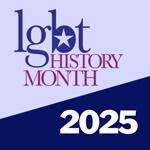Stonewall Inn Isn’t the Only LGBT Site Worthy of National Monument Status
The lesbian, gay, bisexual and transgender (LGBT) community is the only minority worldwide that is not taught its history at home, in public school or through religious institutions. It is why President Obama designating the Stonewall Inn as a National Monument and the Department of the Interior’s LGBT history initiative are of significant import.
Like the important contributions of women and African-Americans, which until recently were largely invisible, the efforts to record LGBT civil rights sites and events marks an important turning point in recognition and respect.
The annual Equality Forum, the nation’s oldest annual LGBT national and international summit will be held in Philadelphia during the 2016 Democratic National Convention. Among the programming are the dedications of two nationally important LGBT historic markers.
One is a Pennsylvania Historic and Museum Commission marker, where Barbara Gittings, the mother of the organized LGBT civil rights movement resided in the 1960s with her life partner Kay Lahusen in their modest third floor apartment. Barbara undertook her pioneering work, which in tandem with Frank Kameny, the father of the movement, laid the groundwork for LGBT civil rights.
The other is a bipartisan and unanimously approved Philadelphia City Council marker at the Arch Street Meeting House, where in February 1979 activists from across the nation organized the seminal 1979 National March on Washington for Lesbian and Gay Rights.
Inspired by the 1963 March on Washington at the Lincoln Memorial, Harvey Milk was a strong advocate for a gay and lesbian march on the National Mall. There were activists who opposed the march believing that no more than 20,000 would be willing to openly identify as gay and make the trip to Washington for the demonstration. In response to Milk’s assassination in November 1978, San Francisco activists wishing to fulfill Milk’s dream called for a Philadelphia Conference to organize the march.
In 1979, few venues would allow gay and lesbians to meet. Fortunately, the Quakers were an exception. The Philadelphia Conference was held at the Arch Street Meeting House, a block from Independence Hall.
This was the first time that LGBT leaders from around the nation successfully met with the outcome the organization of a seminal civil rights event. On October 11, 1979, over 100,000 protestors on the National Mall called for equality. The march defined a national and a civil rights movement. That march was followed by increasingly larger marches on the National Mall in 1987, 1993 and 2000.
For the LGBT civil rights movement, the Philadelphia Conference is akin to Seneca Falls.
The organized LGBT civil rights movement started with Annual Reminders at Independence Hall each July 4th from 1965 to 1969. Forty protesters participated in first Annual Reminder on July 4, 1965. It was the then largest demonstration for LGBT equality in world history. Independence National Historical Park is updating the National Register to document the importance of the Annual Reminders. Directly across from Independence Hall is an Annual Reminders historic marker.
Like the Stonewall Inn, the Philadelphia Conference at the Arch Street Meeting House, Frank Kameny’s residence in Washington and Barbara Gittings residence in Philadelphia are all deserving of National Monument designation.
Malcolm Lazin is the executive director of Equality Forum, the leading national organization on lesbian, gay, bisexual and transgender history. Equality Forum undertakes high impact initiatives, produces documentary films, coordinates nationally and internationally LGBT history month, and presents an annual national and international LGBT civil rights summit.


 Printer-friendly format
Printer-friendly format





